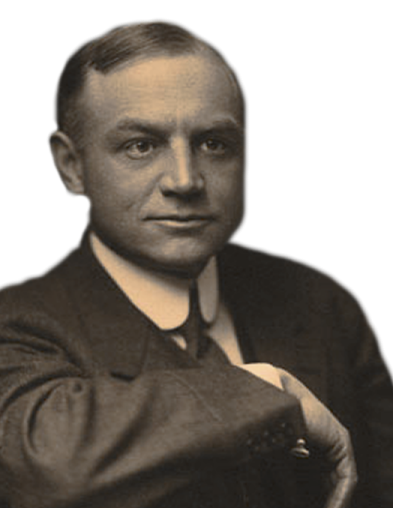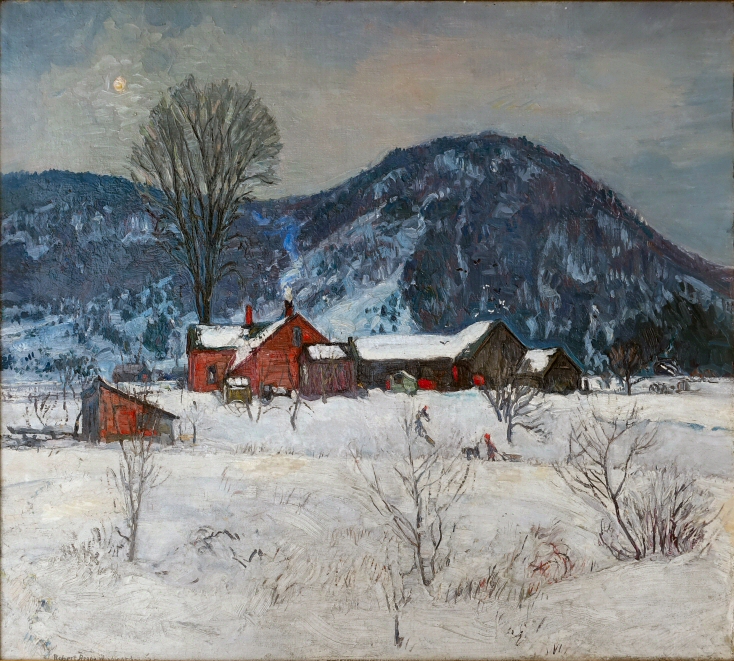George DuPont Pratt
George DuPont Pratt purchased New England Winter from an exhibition at the Deerfield Academy in June of 1932. Woodward notes in his artwork diary, the painting was of the same farm under Purinton Hill he had painted years before in 1925 noting, however, the composition being slightly different, he named Under the Hill.
Diary Comments regarding New England Winter:
"Painted prior to 1928. A painting of Victor Peltier's house and elm with Purinton Hill in background, the second canvas I made of the same subject. The first one called Under the Hill, 25 x 30, was bought by Eugenia B. Frothingham from my Lyman exhibition. This second one of the same subject and slightly different composition was bought by the oil magnate, Mr. George D. Pratt of Glen Cove, Long Island, N.Y. from my exhibition at Deerfield Academy in 1932. Since his death it is now owned by Mrs. Pratt?"
Pratt, the son of a famous industrialist, has a number of similarities with other famous owners of Woodward's paintings, such as, Adeline Havemeyer Frelinghuysen who was the daughter of sugar magnate Henry Havemeyer. Like Pratt, she, was never as famous or renown as her father would be very involved in preservation and philanthropy. Then you have Josephine Everett and her husband Henry, both children of famous politicians and industrialist, were heavily involved in public transportation like Pratt.
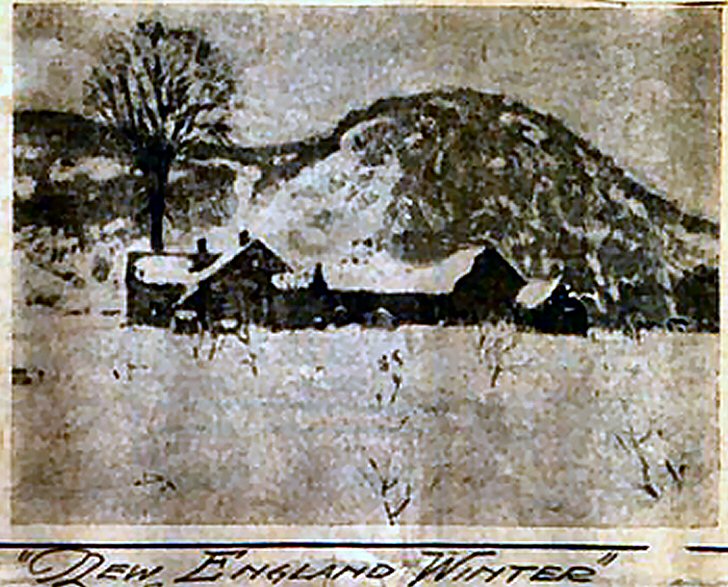
 We only have this newspaper
We only have this newspaper
clipping image of New England Winter
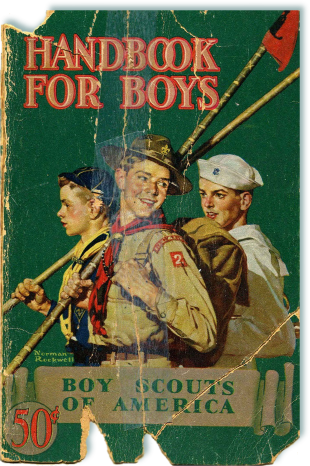
 Cover of the BSA Handbook from the 1930's
Cover of the BSA Handbook from the 1930's
George Dupont Pratt (1869 - 1935) was the son of Charles Pratt. Pratt was born in Brooklyn New York in 1869. The son of Charles Pratt who was a pioneer in the use of petroleum, in the form of refined kerosene, as a replacement for whale oil most commonly used for lighting lamps since the 16th century. The Charles Pratt Company after seven years of existence joined John D. Rockefeller's Standard Oil Company in 1874.
George Pratt attended Amherst College in Western Massachusetts graduating in 1893. An accomplished athlete he was a member of the track team when it won an NEIAA championship in 1890 and he personally set an NEIAA record in a bicycle race in 1892. He was also the captain and quarterback of the Amherst College football team. In 1897, he married Helen Deming Sherman, great-granddaughter of Roger Sherman from Connecticut, the only founding father to sign all four great documents (the Continental Association, the Declaration of Independence, the articles of Confederation, and the Constitution). He later married Vera Derbyshire Amherst Hale in 1926.
George Pratt worked for the Long Island Rail Road and as a trustee on the Standard Oil Trust, but it was his philanthropic work that he was best known. He helped create the Boy Scouts of America and served as the organization's treasurer. He was also New York Conservation Commissioner for six years. He served as a trustee for the American Museum of Natural History, Metropolitan Museum of Art and Amherst College, as well as, President of American Forestry Association, for which he also served as editor for the American Forestry Journal. He was also helped run the Pratt Institute, a private, nonsectarian, non-profit institution of higher learning located in the Clinton Hill neighborhood of Brooklyn, New York, founded by his father Charles.
Pratt was also equally known for his beautiful Long Island estate, Killenworth...
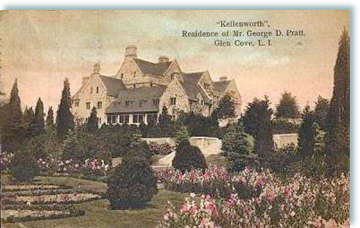
 Killenworth Estate, Glen Cove, LI, NY
Killenworth Estate, Glen Cove, LI, NY
From the Wikipedia page regarding Glen Cove, NY
"The vistas afforded of Long Island Sound from the town's rolling hills attracted late 19th-century wealthy industrial barons, including Charles Pratt and his sons, as well as J. P. Morgan, and F. W. Woolworth. They built large private estates along the island's North Shore. This expanse of settled wealth was part of what would become known in the 1920s as the Gold Coast of Nassau County. Part of the Morgan property was donated to the city and is now operated as Morgan Park and Beach."
Diary Comments regarding Under the Hill:
"I painted the very same subject a number of years later, a canvas entitled ----(left blank in the RSW diary)--This canvas was bought from my exhibition at Deerfield Academy in ..... (blank) by the wealthy art collector Mr. Geo. D. Pratt, official of the Standard Oil Co, for his beautiful world famous estate at Glen Cove, Long Island, and must not be confused with the above.) Since Mr. Pratt's death his estate has been sold by his widow to the Russian government for its N.A. delegates. Whether my canvas still hangs there or not I do not know."
The building of these large private estates coincided with the extension of the Long Island Railroad to the village of Glen Cove, of which Pratt was surely involved in orchestrating. After his death in 1935, his second wife Vera sold the estate to the Soviet government for use as a consulate and residence of their diplomatic attaches to the United Nations. The estate remains to this day as the consulate for the Russian Federation. At the height of the cold war novelist, Nelson De Mille featured the estate in two of his best selling novels-The Talbot Odessy and The Gold Coast.
Woodward in his artwork diary regarding Under the Hill expresses that he did not know what became of New England Winter and wondered if it remained with the house where it hung. None the less, it is fun to image that Woodward's painting might still be hanging there. He does have a bit of a following in the Ukrane, as we have recently discovered, and his work is frequently shared among friends on the Russian social networks.


